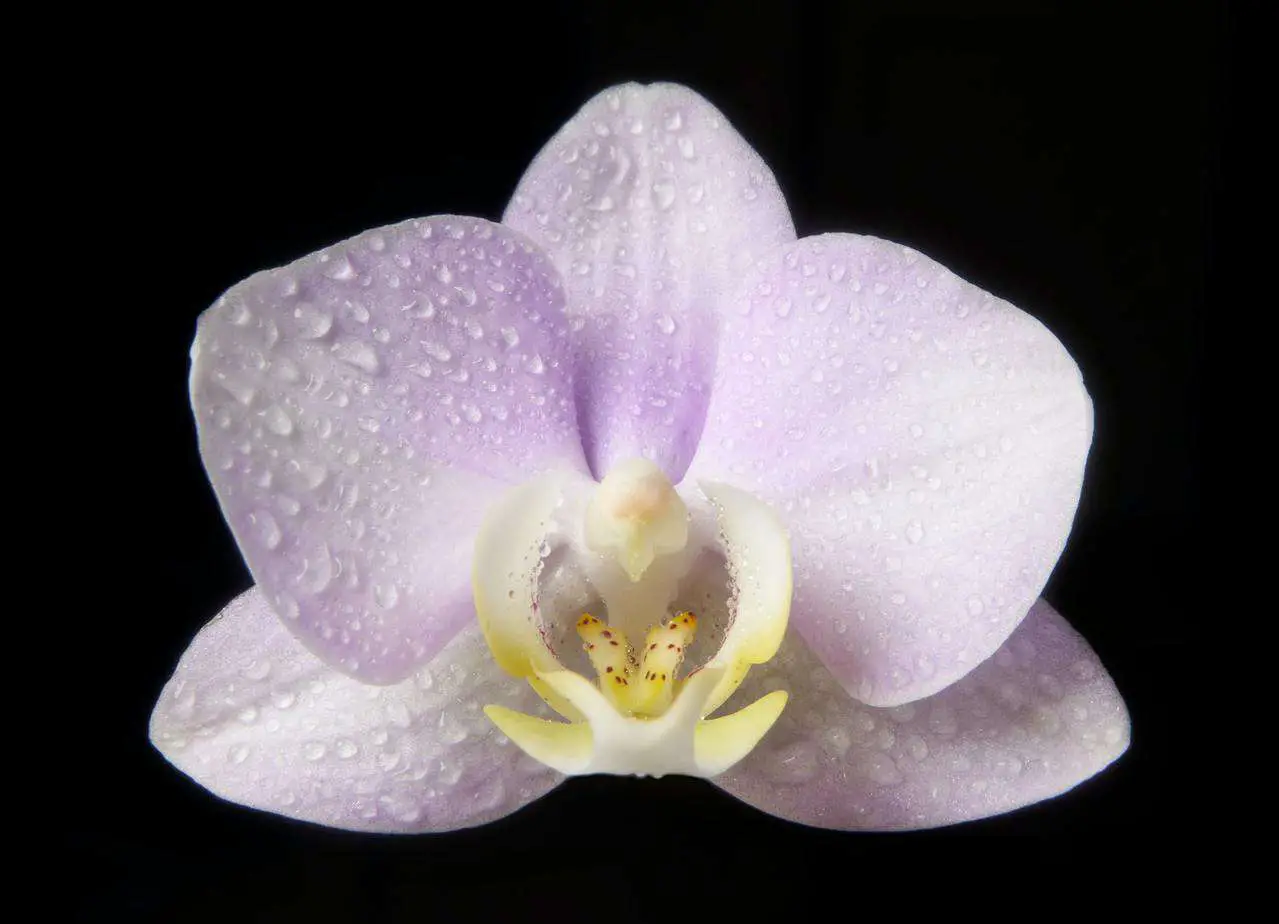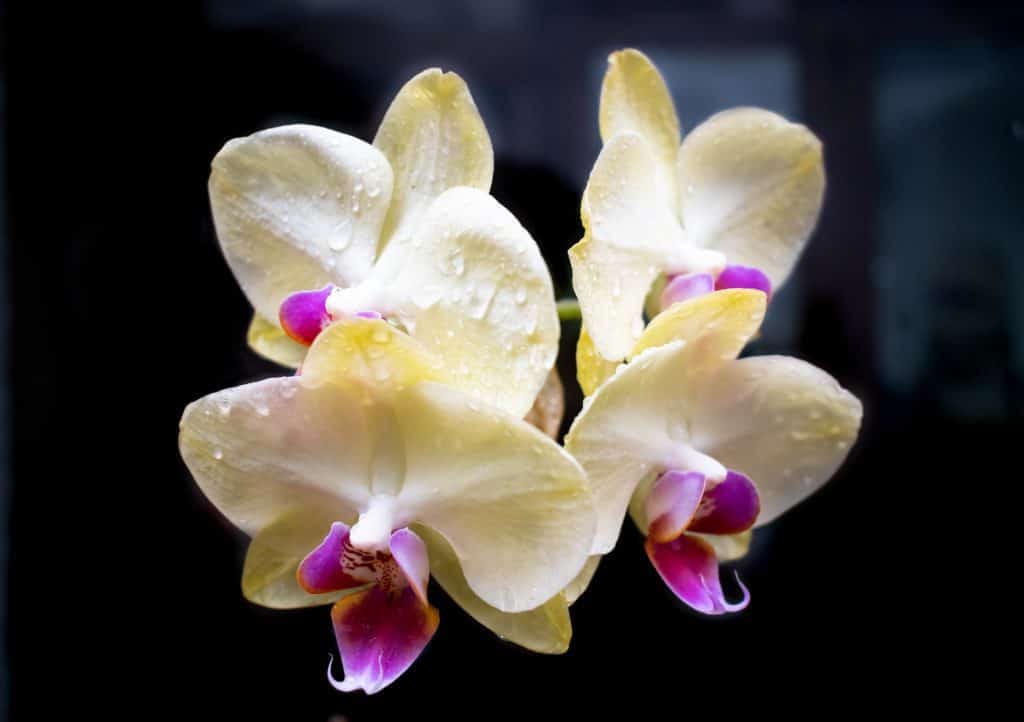For many, hanging orchids are a symbol of elegance and refinement. At the same time, they can be quite difficult to take care of. We want to share some tips on how you can grow your orchid so you can have a beautiful specimen in your home.
This article will cover the steps on how to care for your hanging orchids. From watering it to replanting it, we’ll teach you everything you need to know. In addition, we’ll also share some tips on where you can get an orchid that’s already potted and ready to go!
Table of Contents
How To Water Your Hanging Orchids
Watering is one of the most important parts of caring for your hanging orchids. You want to water it enough that you see water coming out of the bottom, but not so much that the potting mix becomes too wet. If you don’t see water at all coming out of the bottom, then it’s probably time to give your orchid a drink.
The best way to tell if your hanging orchids need water is to gently squeeze the potting medium between your thumb and forefinger. If it feels dry, then it’s dry and needs watering. If there’s any moisture trapped in the medium, then it doesn’t need watering yet.
You’ll also want to watch the leaves for signs that they’re over-watered (when wet leaves are sagging) or under-watered (when wilted). The goal of watering is to keep the leaves plump and moist-looking.
When You Should Re-pot Your Orchid
One of the most important steps in caring for your hanging orchids is re-potting them. There are two times when you should re-pot your orchid:
1) When the orchid’s roots are coming out of the pot.
2) When the orchid has grown too large for its current pot.
Where To Get a Potted Orchid
If you want to grow an orchid, but aren’t sure where to get a potted one, we have you covered! One of the most popular places to get a potted orchid is from your local grocery store. These are usually grown in the store and come with instructions on how to take care of them.
However, if you do buy from a local grocery store it’s best to check for any bugs in the potting soil before you leave.
Another great place to find a potted orchid is at your local florist. You’ll need to make sure to ask about watering instructions when getting an already-potted orchid, because sometimes they may not be included in the purchase.
How To Care For The Roots Of Your Orchid
Orchids are particularly susceptible to root rot. The best way to keep your orchid alive? Keep the roots healthy! Remember to water your orchid regularly, especially if it’s in a dry environment. When you water it, make sure you give it enough time for the plant to soak up the water before you take it out of its pot.
Give your orchid ample lighting hours when deciding where to put it in your home. This will help the plant produce more blooms and grow healthier in general. When watering your plant, make sure that the soil is slightly moist before you pour any in; this helps prevent root rot and overwatering (which can lead to yellow leaves).
Sunlight Needed For Hanging Orchids
Mounting orchids need a lot of sunlight, so they should be in indirect light for at least 10 hours each day. If you’re mounting your orchid on something permanent, like placing it against a tree trunk (permanently mounted), then think about where its location will end up being most suitable- but if not? Just move around!
Tips On How To Take Care Of Your Leaves
The leaves are one of the most important parts of your hanging orchid. Your leaves will serve as the food source for your plant. They’ll be responsible for collecting light and converting it into energy, which is essential for growth.
Don’t overwater the leaves. Just like with humans, too much water can lead to health issues. The right amount is one gallon per week or less, depending on how fast your plant grows. Use tepid water, not hot water. Hot water can cause injury to the leaves and will kill them more quickly than tepid water would.
How to Fertilize Your Orchid
When it comes to fertilizing your orchid, you’ll want to use a liquid house plant fertilizer, like plant food that contains a nitrogen-phosphorous-potassium ratio of 10:10:30. You may find that you’ll need to fertilize your orchid every 3-4 months.
You should also pay attention to the variety of orchids you have, as some will need more fertilizer than others. For example, Phalaenopsis orchids will need monthly fertilization while Cymbidium orchids can go up to 6 months without fertilizer.
There are two ways in which you can fertilize your orchid: externally and internally.
To do this, we recommend that you use either a liquid houseplant fertilizer mixed with water and sprayed on the leaves and roots of the plants or an organic compost tea made from manure and other organic material dissolved in water and sprayed on the plants.
Conclusion
The way to care for your orchid is by following these simple steps. After a few weeks of following these guidelines, you will have a healthy orchid.
1. Water your orchid with purified water when the soil has dried out.
2. Re-pot your mounting orchids when it’s in a pot too small for it to grow in.
3. Keep your orchid in a brightly lit room with plenty of fresh air.
4. Give your orchid fertilizer every 2-3 weeks, but only around the roots and not the leaves.
5. Avoid getting water on the leaves of your orchid, as it can cause spots on the leaves and could lead to rot.
6. Keep the water in the reservoir of your orchid clean to avoid bacteria buildup.
7. Cut off any leaves that are browning to avoid infection.
Looking for more gardening tips? Check these out


